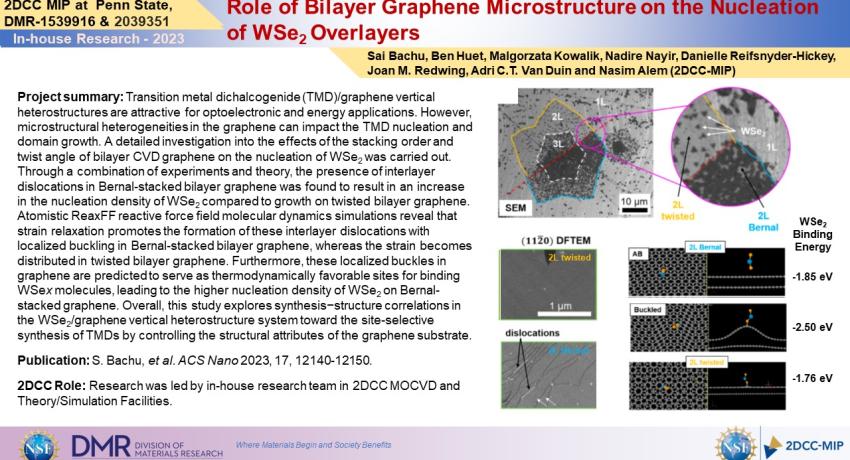Project summary: Transition metal dichalcogenide (TMD)/graphene vertical heterostructures are attractive for optoelectronic and energy applications. However, microstructural heterogeneities in the graphene can impact the TMD nucleation and domain growth. A detailed investigation into the effects of the stacking order and twist angle of bilayer CVD graphene on the nucleation of WSe2 was carried out. Through a combination of experiments and theory, the presence of interlayer dislocations in Bernal-stacked bilayer graphene was found to result in an increase in the nucleation density of WSe2 compared to growth on twisted bilayer graphene. Atomistic ReaxFF reactive force field molecular dynamics simulations reveal that strain relaxation promotes the formation of these interlayer dislocations with localized buckling in Bernal-stacked bilayer graphene, whereas the strain becomes distributed in twisted bilayer graphene. Furthermore, these localized buckles in graphene are predicted to serve as thermodynamically favorable sites for binding WSex molecules, leading to the higher nucleation density of WSe2 on Bernal-stacked graphene. Overall, this study explores synthesis−structure correlations in the WSe2/graphene vertical heterostructure system toward the site-selective synthesis of TMDs by controlling the structural attributes of the graphene substrate.
Publication: S. Bachu, et al. ACS Nano 2023, 17, 12140-12150.
2DCC Role: Research was led by in-house research team in 2DCC MOCVD and Theory/Simulation Facilities.
